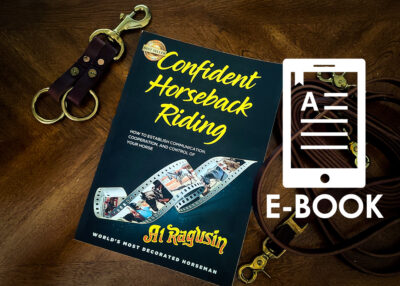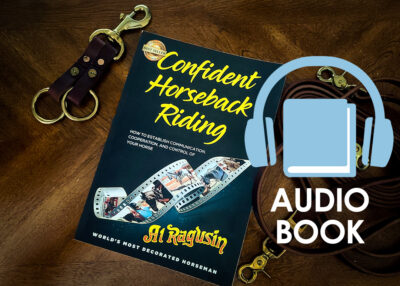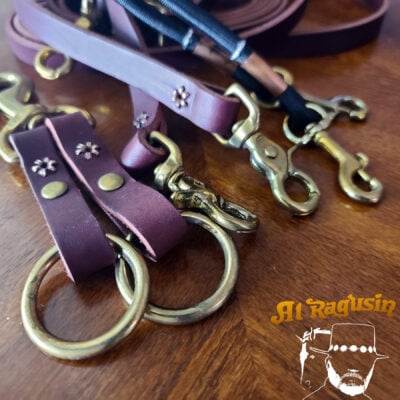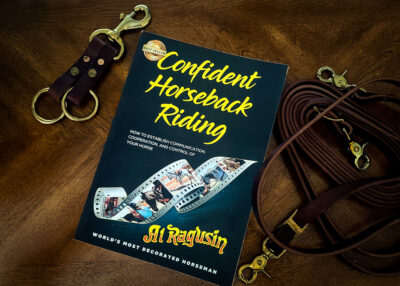Howdy, friends! Last Saturday, I went to our local horseback riding arena where families gather to run barrels, poles, steer roping, and other events. It’s been my tradition for the last 30 years. Unfortunately, the attendance has declined to no more than ten horses competing. It’s clear that times have changed, and kids have more to do with the computer age, video games, and school activities. However, one thing that hasn’t changed is the yelling and criticizing of kids by adults in the arena.
Table of Contents
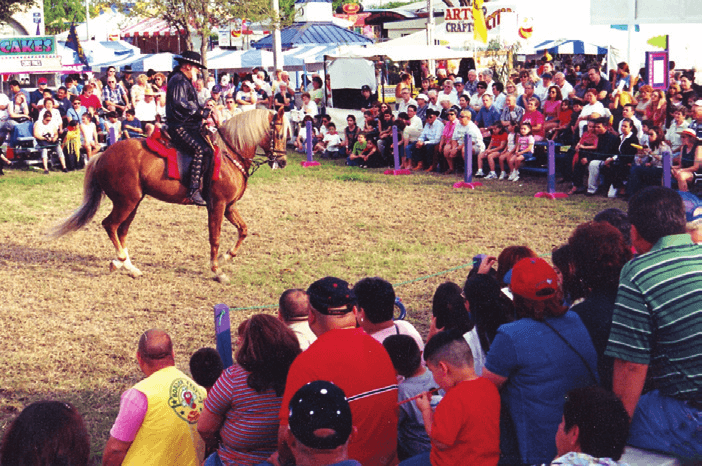
Pressure and yelling do more harm than good
In my opinion, this yelling and criticizing does more harm than good. The kids are already under enough pressure from the bright lights, different arenas, and spectators watching them. Criticizing them in front of all these people is discouraging them from wanting to compete. As someone who has competed for over 45 years, I understand the pressure that comes with competing. The competition arena is not the place to train your horse. All training must be done at home, and if yelling is to be done, it should be words of encouragement.
Coaching to show off
Sometimes, I feel like adults yell and criticize kids to show off how much they know about what they’re coaching. The problem with this is, when the adults ride, the folks in the stands know exactly how much they know. As a horseman, I have learned a lot by watching these kids ride, and it has helped me understand more about the horse and how to communicate with him.
Teaching horseback riding through constructive criticism
I watched a young lady run the poles, and I noticed that she turned her horse too soon, causing the horse to throw his rear end out too far. Her cues were too slow for the speed of the horse, causing her to knock down the second pole. She slowed down the horse to a trot and finished the pattern at a trot, jerking on the horse’s mouth as if to take her frustration out on the horse. This happens so much, and it confuses the horse, making it harder for him to please his rider.
Training the horse in turns
In turns, never pull his head around that his back legs would have to swing around to catch his balance. Instead, trot him along a fence line and turn him back into the fence. That way, the horse would have to take a step back, putting his back legs underneath him and creating a pivot on his back legs. This would make him swing around in balance. Keep doing this until you see him working smoothly, then do it at a lope. If it is a collected lope, the smoother the ride.
Clinics to help riders adjust their horses
I give this constructive criticism to help the rider and make it more comfortable for the horse in the process. I think we would all take our car to a mechanic to have it adjusted, so why not take or ask a trainer to help you adjust your horse? In the month of October and November 2007, I performed and gave clinics at some of the Tractor Supply stores in South Texas. These horseback riding clinics and shows were free of charge and were brought to you by your local Tractor Supply. I encouraged some of you that may have some of the problems that I just mentioned to bring your horse because I was there all day to help you. It cost you nothing but your time.
Training horses with my technique
The Down Under Saddle Supply also helped sponsor these clinics. Be sure to check each month’s issue of the Texas Horse News for details and which area we are going to be in and the dates. Remember that I did my show at these horseback riding clinics to show you how far you can take my technique. From trail riding to dancing horses, you can do it all with the same technique.
Proper horseback riding Training in the Competition Arena
From my years of experience in the horse industry, I have come to realize that the competition arena is not the place to train your horse. All the horseback riding training must be done at home. The competition arena is where you show off the hard work you have put in at home. It is where you demonstrate the fruits of your labor. Therefore, it is not appropriate to yell or criticize your horse or your child in the arena.
Criticism and yelling only serve to discourage your child and your horse. The bright lights, the presence of spectators, and the pressure of competing are already enough stress for your child and your horse. There is no need to add to that stress by yelling or criticizing them. Instead, use words of encouragement to inspire them to do better. Encourage them to do their best and remind them that you believe in them.
Learning from Other Riders
As I watched the riders at the competition, I learned a lot about horses and how to communicate with them. Watching other riders can be a great way to improve your skills as a rider. You can learn from their successes and their mistakes.
For example, I watched a young lady run the poles. She came flying to the first pole and turned her horse too soon. The horse had to throw his rear end out too far to compensate for this mistake. The young lady was not instructing the horse fast enough. Her cues were too slow for the speed of the horse. She knocked down the second pole, knowing that she was out of control, and slowed the horse down to a trot. She was jerking on the horse’s mouth, taking her frustration out on the horse, even though the horse had done nothing wrong.
This happens a lot, and it is one of the reasons that horses get so confused. The rider is asking the horse to go at a speed that is too fast for her to cue him. The horse tries so hard to please, but it is impossible to do so under these circumstances.
Improving Your Riding Technique
As a seasoned rider, I could see where the young lady went wrong. If she had slightly passed the first pole and let her horse turn on his hind legs, his front legs would have been in the right position so that his back legs could have changed to the opposite lead. From that point on, he could change leads at every pole and run the pattern correctly.
If the young lady had asked me, I would have instructed her to start the pattern slowly and then increase the speed as she adjusted to the higher rate of speed. Of course, practice should be done at home, and if she feels that she is losing control, she should slow down.
Similarly, I noticed a man riding a beautiful paint practicing his turns. Every time he would pull on the horse’s reins, the horse would throw his head in pain. The tie-down was adjusted too high and was causing the horse to bump into it as his head went up.
As someone who does not like tie-downs, I recommended that the rider find a bit that the horse would be more comfortable with. I suggested that a D-ring bit and a set of collection reins would be suitable for this horse. This would take the pressure off the direct pull from the rider’s hands to the horse’s mouth.
In turns, the rider should never pull the horse’s head around, causing his back legs to swing around to catch his balance. Instead, the rider should trot the horse along a fence line and turn him back into the fence. This way, the horse would have to take a step back, putting his back legs underneath him, and creating a pivot on his back legs. This would make him swing around in balance. The rider should keep doing this until he sees the horse working smoothly.
Another issue I see in the arena is riders using harsh bits or tight tie-downs to control their horses. In my experience, these tools only hamper the horse’s performance and can even cause pain and discomfort. I recall watching a man riding a beautiful paint, practicing his turns. Every time he would pull on the horse’s reins, the horse would throw his head in pain and bump into the tie-down, which was adjusted too high. I do not like tie-downs because they restrict the horse’s natural movements.
There was something else bothering the horse besides the jerks on the reins. I would’ve liked to see what type of bit he was using and find one that would be more comfortable for him. In this case, I think a D-ring would work nicely, and a set of collection reins would take the pressure off the direct pull from the man’s hands to the horse’s mouth. When turning, the rider should never pull the horse’s head around, forcing the back legs to swing around to catch balance.
Instead, trot the horse along a fence line and turn them back into the fence. This way, the horse has to take a step back, put his back legs underneath him, and create a pivot on his back legs, making him swing around in balance. Keep practicing this until you see the horse working smoothly, then do it at a lope. The smoother the collected lope, the smoother the ride. If this gentleman would practice this, he would have a much smoother riding horse.
I often wonder why riders do not ask for help or seek advice on how to better train their horses. In my experience, it is because they either do not know they are doing it wrong, do not know how to ask, or are content with the way they are doing it. However, a small correction could make a huge difference and take less than an hour to show. I give this constructive criticism to help the rider and make the horse more comfortable in the process.
If you are having trouble with your horse or want to improve your horseback riding training technique, consider attending my clinic, which will take place in some Tractor Supply stores in South Texas this October and November. These clinics and shows are free of charge and brought to you by your local Tractor Supply. I encourage you to bring your horse and spend some time with me. You have nothing to lose, and you may just learn something that could make a huge difference in your horse’s performance.
In conclusion, the competition arena is not the place to train your horse or criticize your children. It is a place to showcase the hard work and training that you have put in at home. Take advantage of resources like clinics and seek advice from experienced trainers to improve your horse’s performance. Remember that every horse is unique and requires a different approach. Take the time to understand your horse, communicate with him, and develop a training technique that works for both of you.
Until next time, folks, keep learning and happy riding!
Your friend,
Al

